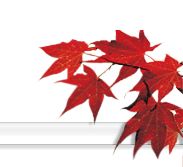| Raper, George
|
| [1789] |
| 48.6 x 32.8 cm |
| Raper Drawing - no. 58 |
|
| hide detailed image description |
Drawing of a bird in left profile, standing on one leg on a tree stump against a plain background. The bird is predominantly coloured white overlaid with grey hatched lines, and individual feathers on the wing and tail described by hatched lines around the unpainted shafts. It has a black and yellow bill and yellow legs. The tree stump is coloured with a fawn wash overlaid with pale grey and brown lines which describe its contours, and is set on a patch of ground represented by overlaid serpentine brush marks in grey and brown over a pale grey wash. The drawing is framed with a thick black ink line and a triple-banded border, the central band of which is coloured with a pink wash and contains the title, signature and date. Most of the outer band appears to have been lost through the drawing having been cropped.
|
|
| hide notes |
- George Raper]
- The drawing is inscribed in black ink at bottom "WHITE-HAWKE of PORT-JACKSON - Natural Size - GEO: RapeR.# 1789 ~".
- The drawing is singed "GEO: RapeR" and dated 1789.
- The drawing is inscribed in pencil at lower left with the number "58", at lower right "?58 48", and on the reverse "72".
- The bird was identified by Hindwood (1964) as the White Goshawk Astur novaehollandiae. ITIS lists the preferred taxonomic name for this species as Accipiter novaehollandiae.
- The author of this catalogue record is Suzanne Stenning.
- By permission of the trustees of the Natural History Museum (London).
- Two sets of transparencies held in the Natural History Museum (London) General Library and Picture Library: Picture Library order number 15158
- Miss Eva Godman donated 1962
- Data sheet available.
- Hindwood, K.A. 'George Raper: an Artist of the First Fleet', Journal and Proceedings of the Royal Australian Historical Society, Vol. 50, Pt. 1, 1964 pp.32-57.
|
|
|


![[White Goshawk, Astur novaehollandiae ]](image.dsml?imageref=NHM-UK_L_a353692_57_M_1.jpg&width=300)